Introduction
With Pectra out the door, and EIP7623 limiting the worst case execution block size, we now have more room to safely increase the gas limit on Mainnet. 153,000 validators now signal for a 60M gas limit on Mainnet, and core developers recently bumped the gas limit to 60M on the Sepolia and Hoodi testnets to analyze the impact of this change.
This analysis will focus on the impact of this change on network propagation, block processing, and overall performance on these testnets. While it's unlikely that we will see any significant impact on these testnets due to the different network topology and validator set, this analysis is useful for ensuring that clients are able to handle the increased gas limit on a fundamental level.
Background
The gas limit determines the maximum amount of computational work that can be included in a single block. However, this comes at a cost to all participants in the network.
- Validators have higher hardware requirements as they need to build and publish a larger block in the same amount of time.
- All nodes on the network must then download and execute the larger block, increasing network and system load.
Methodology
Data Sources
Our analysis leverages data from the ethPandaOps monitoring infrastructure, which provides visibility into Ethereum network performance through the Xatu data collection system. Nodes are run by both the ethPandaOps team and the community. Xatu connects to the Beacon API event stream, which has no guarantees on event publication or ordering, and as such can be considered worst case performance.
Parameters
We analyzed Sepolia & Hoodi over a 14-day period to understand the impact of the 60M gas limit increase:
🔵 Sepolia Testnet
Permissioned testnet with a closed validator set and large execution state size, making it more representative of mainnet conditions.
🟣 Hoodi Testnet
Newer testnet with an open validator set and smaller execution state size, providing a different performance profile.
Metrics
Our analysis will focus on 2 metrics that fire at different points in the slot lifecycle, comparing them against Gas Usage of the block.
⏱️ Block Production Timeline
Published
Metric
Propagate
Metric
📡 Block P2P
When nodes first see the block via gossip network
- Measured via
block_gossipevent - Occurs before execution
- Pure network propagation metric
✓ New Head
When client considers block as the new chain head
- Formula:
max(block, head, blobs) - Includes execution time
- Must wait for all blobs
Analysis
Is 60M safe?
1. Are blocks still being proposed on time?
We can observe this by looking at the P90(min per slot) grouped by gas bucket of the 📡 P2P metric. This is a fancy way of saying:
- First find the earliest time any Xatu node saw the block for the slot
- Then for each gas bucket, find the 90th percentile of these first seen times
This metric gives us insight in to block proposers ability to build and propagate blocks on time. If even the fastest nodes are receiving blocks significantly later as gas usage increases, it suggests proposers may be struggling when building and propagating larger blocks.
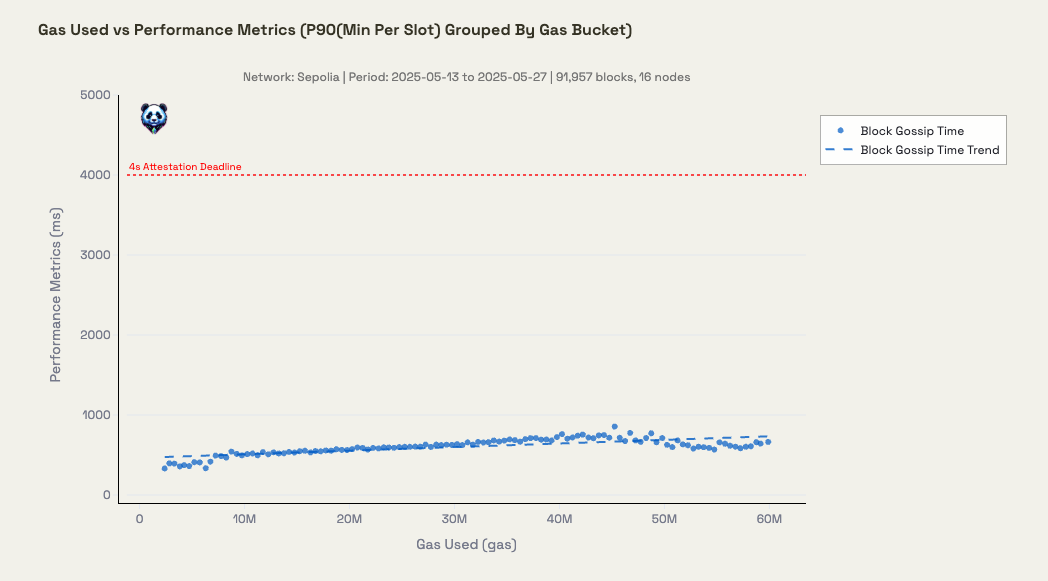
Figure 1: Sepolia P90(min per slot) grouped by gas bucket of the 📡 P2P metric. At 60M gas usage, 90% of blocks are first seen by 680ms.

Figure 2: Hoodi P90(min per slot) grouped by gas bucket of the 📡 P2P metric. At 60M gas usage, 90% of blocks are first seen by 1016ms.
Across both networks we can see that blocks are continuing to be proposed on time. As expected, we observe a slight increase in the block proposal time as the gas usage of the blocks increases.
2. Are blocks being accepted before 4s?
We can observe this by looking at the 90th percentile of our ✓ New Head metric. Using the 90th percentile allows us to filter out any outliers. As a reminder, 66% of the network needs to see the block and any associated blobs within 4s for it to be considered valid.
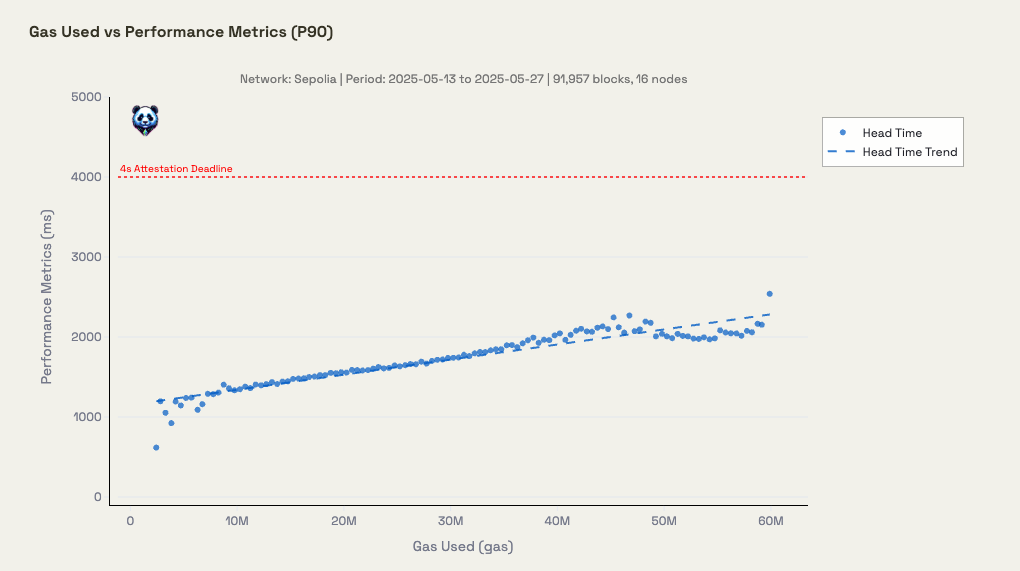
Figure 3: Sepolia p90(✓ New Head metric). Blocks are being accepted before 4s.
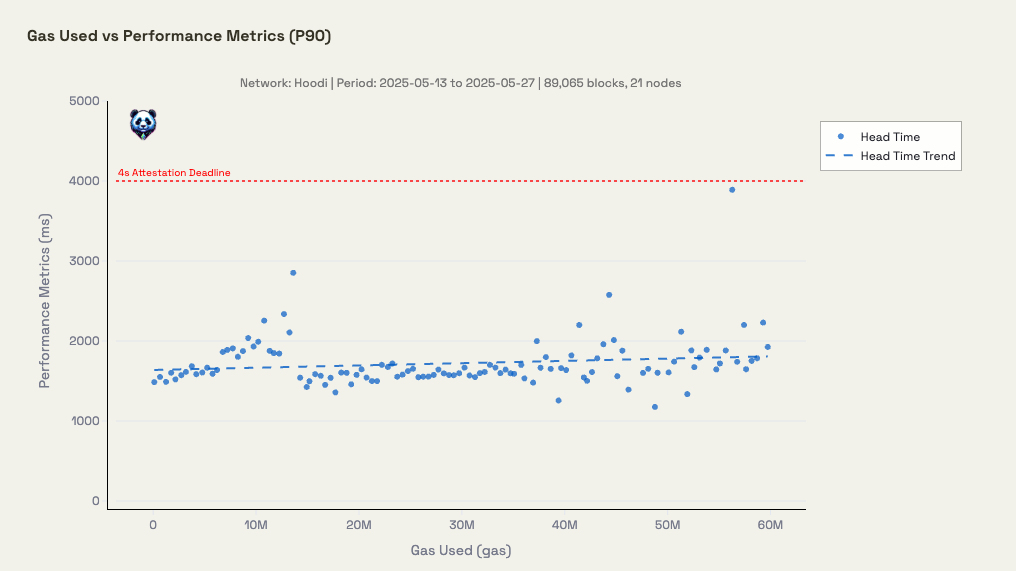
Figure 4: Hoodi p90(✓ New Head metric). Blocks are being accepted before 4s.
Again, we can see that blocks are being accepted well before the 4s. As expected, we observe a similar increase in this metric as the gas usage of the blocks increases. It's worth noting here that Hoodi has a smaller relative arrival time than Sepolia as gas usage increases.
Beyond 60M?
Let's venture into mad scientist territory: what happens if we go beyond 60M on these networks? We can make a few assumptions and extrapolate the current performance out to see when we would cross the 4s threshold. In reality we would expect to see hidden bottlenecks and other issues pop up, but it's still an interesting exercise.
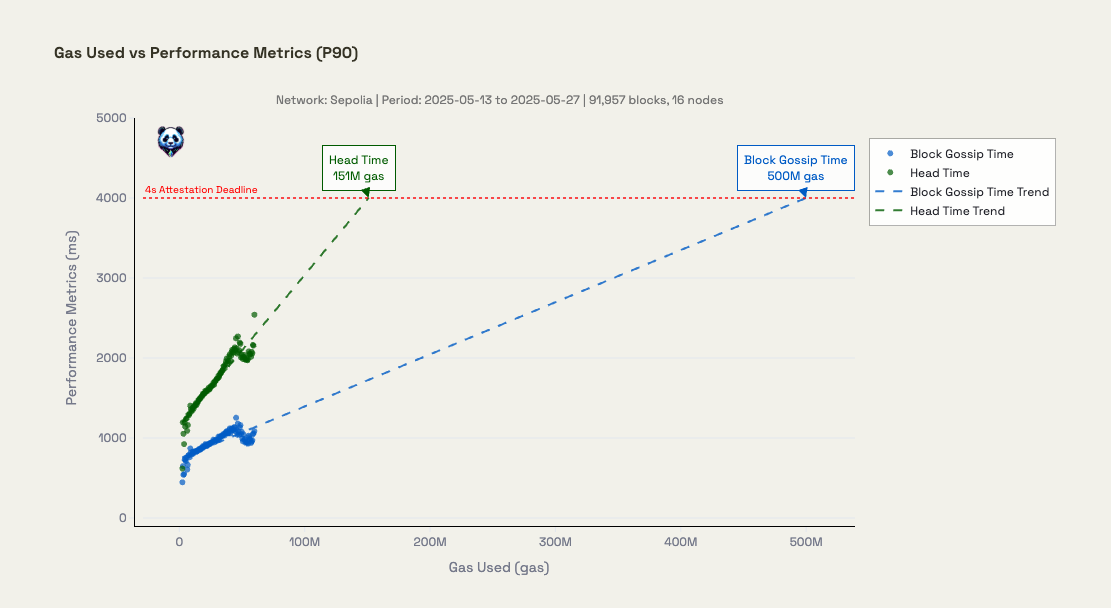
Figure 5: Sepolia p90(both metrics) with trend lines extrapolated out to cross the 4s threshold.
The ✓ New Head metric crosses at 151M gas, and the 📡 P2P metric crosses at 500M gas. This disconnect between the two metrics shows the overhead the network pays from executing the block as well as propagating any blobs at the same time.
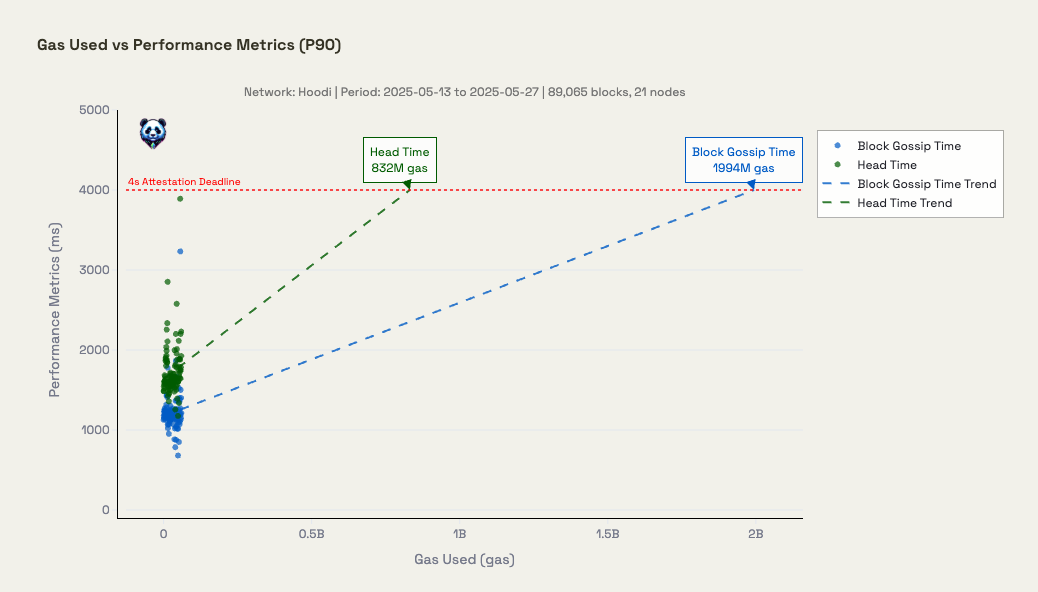
Figure 6: Hoodi p90(both metrics) with trend lines extrapolated out to cross the 4s threshold.
Even more interestingly, on Hoodi, we see more extreme results, with the ✓ New Head metric crossing at 832M gas (5x Sepolia), and the 📡 P2P metric crossing at 1,994M gas (4x Sepolia). There is a large difference between the two networks on both metrics. This may indicate a sensitivity to large execution state size. This is a particularly interesting result as Mainnet has a much larger execution state size and we'll be monitoring this closely as we continue to scale.
Acknowledgments
Special thanks to our contributoor community for providing the distributed monitoring data that makes this analysis possible. Their participation gives us unprecedented visibility into Ethereum network behavior.
Want to contribute to our monitoring efforts? Become a contributoor!
Conclusion
Based on the data from Hoodi & Sepolia, 60M is safe as far as block/blob propagation is concerned. It's very important to note that these testnets are not representative of Mainnet. We'll be conducting additional analysis on Mainnet in the coming days, but for now we can say that 60M is possible on a fundamental level.
🚀🚀🚀

